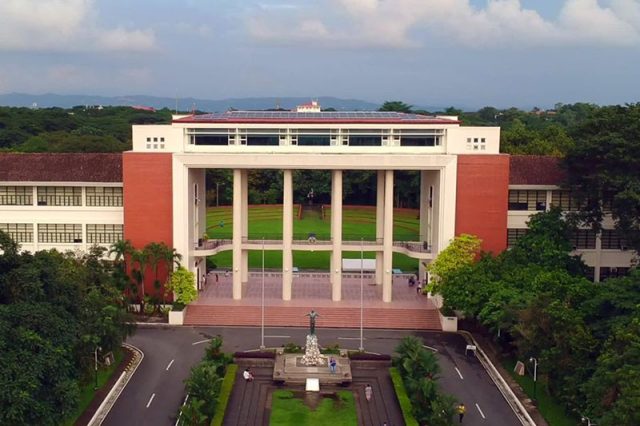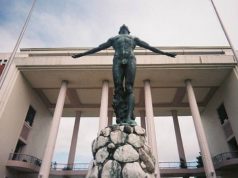
A traffic jam on the flagship campus of the premier state university used to be unthinkable.
This was what some Filipinos claimed after going in and out of the University of the Philippines-Diliman in the past few days.
Pictures and videos of such scenarios have been circulating on Twitter and Facebook since last week.
A researcher-writer on February 14 shared images taken by a friend which featured cars lined up along roads on the campus.
“Pinag-uusapan lang namin ng friend ko before: Sa sobrang anti-commuter at car-centric na ngayon ng UP, darating ang time na magiging problema ang traffic dito dahil sa mga private car pati pagpa-park nila. First day of classes in UP today,” one wrote.
Pinag-uusapan lang namin ng friend ko before: Sa sobrang anti-commuter at car-centric na ngayon ng UP, darating ang time na magiging problema ang traffic dito dahil sa mga private car pati pagpa-park nila.
First day of classes in UP today:
[pic from @yosh_exe] pic.twitter.com/kRurvn4vy4
— Jezreel Ines (@jezreelines_) February 14, 2023
“Someone should tell the UP administration that the traffic situation [on] the campus is so bad that people arrive late for their work and classes,” Jan Robert Go, Associate Dean for Research, Extension, and Publications at UP Diliman’s College of Social Sciences and Philosophy, wrote on February 16.
“The closure of the Academic Oval forced all motorists to use the inner streets. The policy must be rethought,” he added, referring to the 2.2-kilometer elliptical road on the campus that is canopied by sturdy Acacia trees.
The university’s Oval is famous for being a joggers’ and cyclists’ spot and for being the site of various demonstrations and other student activities.
Writer Rolando Tolentino, a faculty member at UP Diliman, shared a picture of the vehicular congestion on Valentine’s Day which he claimed lasted for a “whole day.”
“Return to F2F [face-to-face] learning this semester, biglang pumasok naman ang monstrous traffic, making it difficult to go around campus for errands. Grrr!” he said on Facebook.
Joshua Agar, wind engineer and associate professor at the UP Institute of Civil Engineering, filmed a traffic situation on the campus and shared it on Twitter on February 17.
“Been talking to Dr. Antonio who was waiting for his ride in ICE [Institue of Civil Engineering] as his leg was casted due to ACL tear. We’re both frustrated that it took 30 minutes to [simply] go from our institute to Area 3 within UP due to this:”
Been talking to Dr. Antonio who was waiting for his ride in ICE as his leg was casted due to ACL tear. We’re both frustrated that it took 30 minutes to simple go from our institute to Area 3 within UP due to this: pic.twitter.com/zL38DdPeAJ
— Joshua C. Agar (@JoshuaCAgar) February 16, 2023
A Facebook user on February 16 appealed for UP Diliman’s Office of the Vice Chancellor for Community Affairs (OVCCA) to “open” the Academic Oval to vehicles.
“Hindi na po makaturangan ang araw-araw na traffic sa UP. Sa tanang buhay ko, ngayon ko lang nakitang nagkakagitgitan sa daan sa campus dahil iisa lang ang lagusan. Sana po mabigyan ng konsiderasyon ang makabubuti sa mas nakararami. Salamat po,” she wrote.
Some attributed it to the first day of classes for the semester which started on February 13, Wednesday.
Others attributed it to the celebration of Valentine’s Day on February 14, as well as the week-long 2023 UP Fair from February 14 to 18 in which outsiders go to the campus for the festivities.
May Lim, a professor at UP Diliman’s National Institute of Physics, speculated it could be a “parking issue associated with the UP Fair” before.
“[Temporary] fix by prioritizing vehicles [with] no parking [requirement]. All busy two-lane roads made one-way: bike lane, PUV lane (exclusive), then all others. Ban on-street parking along the path,” she tweeted in response to Agar’s post.
“The PUV’s need to be unstuck from the rest so that there’s a viable alternative for getting people to the venue. Once that’s in place, we’ll need an assurance that the return trip would still be running after the event, along with safe transfers. That’s about it as temp fixes go,” Lim added.
Tolentino, meanwhile, attributed it to the semester’s start of classes at that time and a scheme implemented involving the Academic Oval.
“One way ang isang short segment ng University Oval, requiring everyone na umikot ulit to get from one side to another of campus,” he commented on Facebook.
“The carless Oval scheme with a one-way strip does not work. Ang layo ng mga ikutan to get to another side of campus,” Tolentino said in another post.
On January 31, the OVCCA released a memorandum titled “Guide to Transportation and Traffic for the 2nd Semester AY 22-23.”
It largely closed off the Academic Oval from motorized traffic, except joggers and non-motorized vehicles such as “road users Type C, D, and E.” These refer to bicycles, scooters, and other personal mobility carriers.
The memorandum also listed the entry and exit access to the campus, as well as the schematic routes of public utility jeeps like the UP IKOT.
It took effect on February 13, the first day of classes for its students.
The UP National Center for Transportation Studies shared infographics to help the public visualize the vehicular guidelines.
Suggestions
In response to the vehicular congestion, lawyer and alum Jesus Falcis suggested that public transport inside the campus should be made more “reliable” and that there should be a “predictable supply of Toki/Ikot jeeps from PHILCOA.”
He also argued that public utility vehicles should be allowed to traverse the Academic Oval to prevent vehicular congestion in other parts of the campus.
“An environmentally friendly engine updated Jeepney or 10-12 seater small van as public transport is more efficient,” Falcis tweeted.
Go also said that “free parking” on campus “should be reduced” and that cars shouldn’t be allowed to park on the streets.
For Lim, the issue “goes beyond Oval access.”
“PUVs [public utility vehicles] need lane priority (exclusivity even) for their entire path, but they also have to run on schedule. Come to think of it, UP Campus is a pretty good test bed for designing responsive service contracting guidelines,” she said.
“I stopped taking the IKOT jeep and just walked everywhere because of the unpredictability of how long they’d wait for passengers at KNL [Krus na Ligtas]. Service contracting would address waiting time variability,” Lim added.
Jaxx Fallaria, national convenor for the Youth Strike 4 Climate Philippines, shared some of the proposals made in an ethnographic study of the Metro Manila commuting culture in 2019.
According to Fallaria’s group, public transport should be made accessible round the clock and that commuting should be “convenient” and affordable.
The group added that public transport should also be “time-efficient,” in which Filipinos “should not occupy too much time in queues and on streets.”
“These were recommendations based on our immersion with the commuting culture, and interviewing commuters and public [transportation] riders and employees,” Fallaria tweeted.
“Gusto ko lang ding sabihin na pare-pareho tayong biktima ng bulok na car-centric na sistema. Panahon na para angkinin natin muli ang ating mga kalsada,” she added.
On February 17, Marco Terrado tweeted that Roces Avenue in UP Diliman “is now passable” from Magsaysay Avenue.
“Instead of getting stuck at that intersection (and the succeeding one near Bahay ng Alumni) you can now turn left, with the outermost lane in the [Academic] Oval now open to traffic. We just need a common sense solution like this,” he tweeted.
According to a transportation reform advocacy group, transport woes in the metro can be blamed on “car-centrism” and the lack of infrastructure that can help pedestrians and commuters move around.
Car centrism is a notion in which an urban plan privileges the private automobile as a primary transportation mode, often excluding those who walk, bike, or use public transport.









